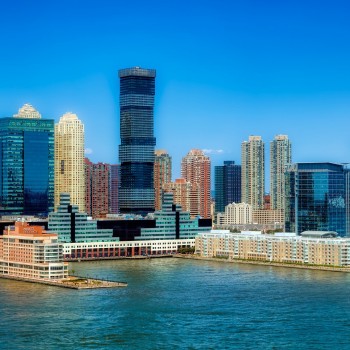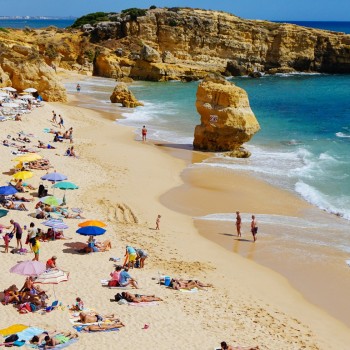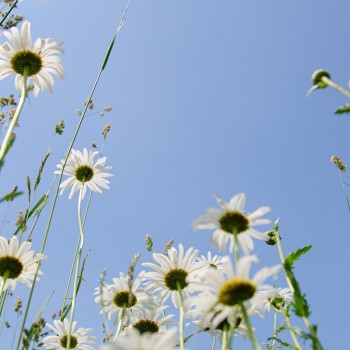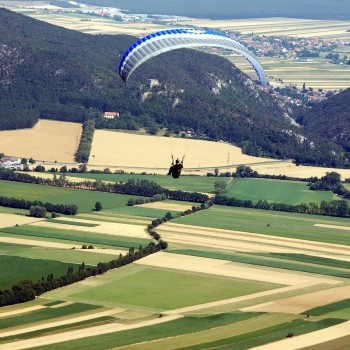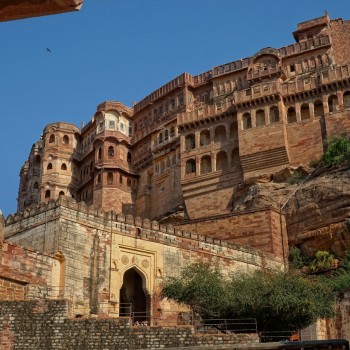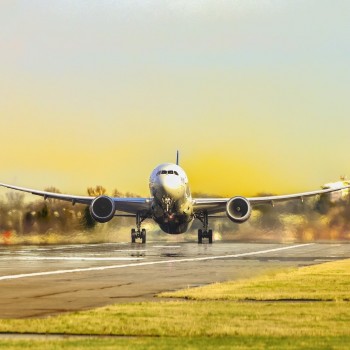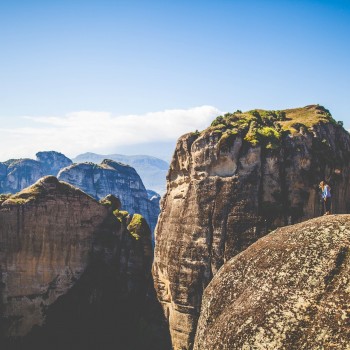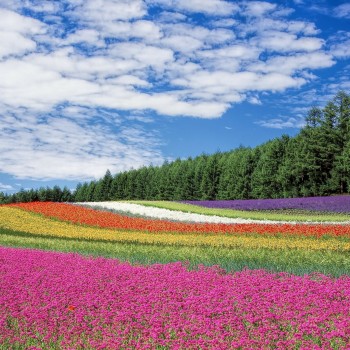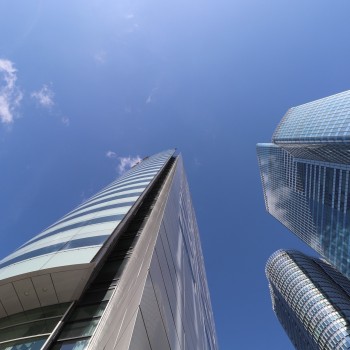Dominican Republic
Dominican Republic
Capital city description
Santo Domingo has a population of 965,040, according to 2010 data. Santo Domingo has a surface area of 104.4 square kilometers. The city has a tropical climate, and the coolest months are between December and March. Less moisture is seen during these periods. Between July and September, temperatures are at the highest levels.
Santo Domingo is today the industrial, commercial and financial center of the country. The construction of hydroelectric power plants has enabled the industry to develop rapidly. The country's most important industries, such as metallurgy, petrochemical, textile, food processing, plastics, and cement, are gathered here. Passenger and freight traffic in the port is hefty. The city is home to the University of Autonomous Santo Domingo (1538), the oldest higher education institution in the Western Hemis.
Climate
The climate of the Dominican Republic is Cool Tropical, with a temperature pretty stable along the seasons, which goes around 25 and 35ºC. The highest temperatures are reached in the summer between July and August. There is a slight temperature variation from November to January as it decreases to 18 in high altitude regions and 24ºC in the rest of the country.
- July and August ( summer)
- November to January ( Wet season)
Languages spoken
Spanish is the official language of the Dominican.
Fun/Fascinating Facts
Holds the Eastern Five-Eighths
The country partitions the island of Hispaniola with Haiti, making it the one island shared by two countries. The Dominican Republic holds the Eastern five-eighths of the island of Hispaniola, whereas the nation of Haiti controls the western three-eighths of the island.
Hub of Two Unique, Precious Stones
One of the fun facts about the Dominican Republic is that it has two unique native stones that you could nevermore find anywhere else in the world – Dominican Amber and Larimar. The first stone was discovered millions of years ago because of the humid climate in the DR and the dead prehistoric leguminous tree, Hymenaea Protera. It is known as the purest amber available because of the highly concentrated fossils included in it and the precise composition. The second one, Larimar, has a rare blue variety of the silicate mineral pectolite, with a color that turns from light blue to green-blue to deep blue.
Famous for the Beaches
The Dominican Republic's fun facts include that it is the best place for weddings and honeymoons. It is because there are lots of beautiful beaches and islands. It is highly famous for its white sandy beaches. More than 200 beaches you can find there, and most of them are un-crowded or un-spoiled. In the Caribbean, the Dominican Republic is the most visited country.
Under the Spell of Santo Domingo
The capital city of Santo Domingo is charming. You will find a wide variety of things to explore, including the Museum of the Royal Houses, Alcazar de Colon, Plaza de Espana, Basilica Cathedral of Santa Maria la Menor, Faro a Colon, etc. You will get fascinated and allured with its unique culture, and thus you could not resist visiting again. Faro a Colon is a lighthouse made by Christopher Columbus on the 500th anniversary of the island's discovery.
Beep – Beep
One of the Dominican Republic's fun facts is that when you go to the roads of the Dominican Republic, you will see the car horn is more prominent than anything else is. Car horns are used constantly and more frequently than brakes on the roads during a traffic jam. If you visit the country, you need to understand the beep language. One short beep means that I am here or ready to move on. With two short beeps, you need to get alert as the yellow signal, and two long beeps indicate getting out of the way. Don't ever get upset if you are a visitor there, and remember it is just the way of life in the Dominican Republic.
Unique Customs/Traditions
In Dominican Republic culture, you will find Dominicans are kind and peaceful people. Attempts at speaking Spanish are a good sign of respect for the local people. Be polite, show respect, and do your best to speak the language, and you will be treated with kindness. Avoid talking about Haiti. Although relations have improved, many Dominicans, particularly of the older generations, harbor resentment towards Haitians.
Santo Domingo was invaded and occupied by Haiti for a good part of the 19th century. The Dominican Republic fought its first war of independence against Haiti, not Spain, after which the Dominican Republic faced several other invasions from its neighbor.
In the 20th century, Trujillo's dictatorship massacred tens of thousands of Haitians in the 1930s, fueled the resentment between both nations. Nowadays, about a million Haitians live in the Dominican Republic, most of them illegally.
Some Dominicans' opinions towards illegal immigrants from Haiti are similar to some Americans' attitudes towards Mexican illegal immigrants. Unlike the US, the major difference is that the Dominican Republic is a small and developing country by world standards. Gang wars can erupt along the border, so stay cautious and be sensitive.
Still, the issues remain very complex, and Dominicans often find their position to be misunderstood by foreigners. For example, the Dominican Republic was the first country to come to Haiti's aid in the 2010 Haitian earthquake and has made impressive efforts to help its neighbor during this crisis.
This shows that despite their historical, linguistic, religious, cultural, and racial differences, Haitians and Dominicans still consider each other brotherly yet proudly independent nations.
When staying at luxury resorts or any place in the Dominican Republic, it is advisable to tip for most services. The Dominican Republic is still a relatively developing country, and tipping the people who serve you helps them be treated well.
Popular universities
| Name | Description | |
|---|---|---|
| .Pontificia Universidad Católica Madre y Maestra (Pontifical Catholic University Madre y Maestra) | Founded in 1962, Pontificia Universidad Católica Madre y Maestra (Pontifical Catholic University Madre y Maestra) is a private higher education institution located in the urban setting of the large city of Santiago de los Caballeros (population range of 500,000-1,000,000 inhabitants), Santiago. This institution also has branch campuses in the following locations: Santo Domingo, Puerto Plata. Officially recognized by the Ministerio de Educación Superior, Ciencia y Tecnología, República Dominicana (Ministry of Higher Education, Science and Technology of the Dominican Republic), Pontificia Universidad Católica Madre y Maestra (PUCMM) is a large (uniRank enrollment range: 15,000-19,999 students) coeducational Dominican higher education institution formally affiliated with the Christian-Catholic religion. Pontificia Universidad Católica Madre y Maestra (PUCMM) offers courses and programs leading to officially recognized higher education degrees such as bachelor's degrees in several areas of study. | |
| .Universidad Tecnológica de Santiago (Santiago University of Technology) | Founded in 1974, Universidad Tecnológica de Santiago (Santiago University of Technology) is a private higher education institution located in the urban setting of the large metropolis of Santiago (population range of over 5,000,000 inhabitants). This institution also has branch campuses in the following locations: Santo Domingo, Puerto Plata, Mao, Moca. Officially recognized by the Ministerio de Educación Superior, Ciencia y Tecnología, República Dominicana (Ministry of Higher Education, Science and Technology of the Dominican Republic), Universidad Tecnológica de Santiago (UTESA) is a very large (uniRank enrollment range: over-45,000 students) coeducational Dominican higher education institution. Universidad Tecnológica de Santiago (UTESA) offers courses and programs leading to officially recognized higher education degrees such as bachelor's degrees, master's degrees in several areas of study. | |
| .Universidad Autónoma de Santo Domingo (Autonomous University of Santo Domingo) | Founded in 1538, Universidad Autónoma de Santo Domingo (Autonomous University of Santo Domingo) is a non-profit public higher education institution located in the urban setting of the metropolis of Santo Domingo (population range of 1,000,000-5,000,000 inhabitants), Distrito Nacional. Officially recognized by the Ministerio de Educación Superior, Ciencia y Tecnología, República Dominicana (Ministry of Higher Education, Science and Technology of the Dominican Republic), Universidad Autónoma de Santo Domingo (UASD) is a very large (uniRank enrollment range: over-45,000 students) coeducational Dominican higher education institution. Universidad Autónoma de Santo Domingo (UASD) offers courses and programs leading to officially recognized higher education degrees such as bachelor's degrees in several areas of study. | |
| Universidad Iberoamericana (Ibero-American University) | . Universidad Iberoamericana (Ibero-American University), established in 1982, is a higher education institution located in the metropolis of Santo Domingo (population range of 1,000,000-5,000,000 inhabitants), Distrito Nacional. Officially recognized by the Ministerio de Educación Superior, Ciencia y Tecnología, República Dominicana (Ministry of Higher Education, Science and Technology of the Dominican Republic), Universidad Iberoamericana (UNIBE) is a small (uniRank enrollment range: 4,000-4,999 students) coeducational Dominican higher education institution. Universidad Iberoamericana (UNIBE) offers courses and programs leading to officially recognized higher education degrees such as bachelor's degrees in several areas of study. | |
| .Instituto Superior de Formación Docente Salomé Ureña (Salomé Ureña Higher Institute of Teacher Education) | Instituto Superior de Formación Docente Salomé Ureña (Salomé Ureña Higher Institute of Teacher Education),established in 1880, is a higher-education institution located in the metropolis of Santo Domingo (population range of 1,000,000-5,000,000 inhabitants), Distrito Nacional. Officially recognized by the Ministerio de Educación Superior, Ciencia y Tecnología, República Dominicana (Ministry of Higher Education, Science and Technology of the Dominican Republic), Instituto Superior de Formación Docente Salomé Ureña (ISFODOSU) is a medium-sized (uniRank enrollment range: 6,000-6,999 students) coeducational Dominican higher education institution. Instituto Superior de Formación Docente Salomé Ureña (ISFODOSU) offers courses and programs leading to officially recognized higher education degrees in several areas of study. | |
| .Instituto Tecnológico de Santo Domingo (Santo Domingo Institute of Technology) | Instituto Tecnológico de Santo Domingo (Santo Domingo Institute of Technology), established in 1972, is a non-profit private higher education institution located in the urban setting of the metropolis of Santo Domingo (population range of 1,000,000-5,000,000 inhabitants), Distrito Nacional. Officially recognized by the Ministerio de Educación Superior, Ciencia y Tecnología, República Dominicana (Ministry of Higher Education, Science and Technology of the Dominican Republic), Instituto Tecnológico de Santo Domingo (INTEC) is a small (uniRank enrollment range: 5,000-5,999 students) coeducational Dominican higher education institution. Instituto Tecnológico de Santo Domingo (INTEC) offers courses and programs leading to officially recognized higher education degrees such as bachelor's degrees, master's degrees, doctorate degrees in several areas of study. | |
| Universidad APEC (APEC University) | Universidad APEC (APEC University), established in 1965, is a non-profit private higher education institution located in the urban setting of the metropolis of Santo Domingo (population range of 1,000,000-5,000,000 inhabitants) Distrito Nacional. This institution also has a branch campus in Santiago. Officially recognized by the Ministerio de Educación Superior, Ciencia y Tecnología, República Dominicana (Ministry of Higher Education, Science and Technology of the Dominican Republic), Universidad APEC (UNAPEC) is a large (uniRank enrollment range: 10,000-14,999 students) coeducational Dominican higher education institution. Universidad APEC (UNAPEC) offers courses and programs leading to officially recognized higher education degrees such as bachelor's degrees, master's degrees in several areas of study. | |
| .Universidad Nacional Pedro Henríquez Ureña (Pedro Henríquez Ureña National University) | Universidad Nacional Pedro Henríquez Ureña (Pedro Henríquez Ureña National University),founded in 1966, is a non-profit private higher-education institution located in the urban setting of the metropolis of Santo Domingo (population range of 1,000,000-5,000,000 inhabitants), Distrito Nacional. This institution also has a branch campus in La Vega. Officially recognized by the Ministerio de Educación Superior, Ciencia y Tecnología, República Dominicana (Ministry of Higher Education, Science and Technology of the Dominican Republic), Universidad Nacional Pedro Henríquez Ureña (UNPHU) is a medium-sized (uniRank enrollment range: 7,000-7,999 students) coeducational Dominican higher education institution. Universidad Nacional Pedro Henríquez Ureña (UNPHU) offers courses and programs leading to officially recognized higher education degrees such as pre-bachelor degrees (i.e. certificates, diplomas, associate or foundation), bachelor degrees in several areas study. | |
| Universidad del Caribe (University of Caribe) | .Universidad del Caribe (University of Caribe), founded in 1995, is a non-profit private higher education institution located in the urban setting of the metropolis of Santo Domingo (population range of 1,000,000-5,000,000 inhabitants) Distrito Nacional. This institution also has a branch campus in Monte Plata. Officially recognized by the Ministerio de Educación Superior, Ciencia y Tecnología, República Dominicana (Ministry of Higher Education, Science and Technology of the Dominican Republic), Universidad del Caribe (UNICARIBE) is a large (uniRank enrollment range: 25,000-29,999 students) coeducational Dominican higher education institution. Universidad del Caribe (UNICARIBE) offers courses and programs leading to officially recognized higher education degrees such as pre-bachelor degrees (i.e., certificates, diplomas, associate or foundation), bachelor degrees, master degrees in several areas study. Universidad del Caribe (University of Caribe), founded in 1995, is a non-profit private higher education institution located in the urban setting of the metropolis of Santo Domingo (population range of 1,000,000-5,000,000 inhabitants) Distrito Nacional. This institution also has a branch campus in Monte Plata. Officially recognized by the Ministerio de Educación Superior, Ciencia y Tecnología, República Dominicana (Ministry of Higher Education, Science and Technology of the Dominican Republic), Universidad del Caribe (UNICARIBE) is a large (uniRank enrollment range: 25,000-29,999 students) coeducational Dominican higher education institution. Universidad del Caribe (UNICARIBE) offers courses and programs leading to officially recognized higher education degrees such as pre-bachelor degrees (i.e., certificates, diplomas, associate or foundation), bachelor degrees, master degrees in several areas study. | |
| . Instituto Tecnológico de Las Américas (Technological Institute of the Americas) | Established in 2000, Instituto Tecnológico de Las Américas (Technological Institute of the Americas) is a higher education institution located in the large town of Boca Chica (population range of 10,000-49,999 inhabitants), Santo Domingo. This institution also has a branch campus in Santo Domingo. Officially recognized by the Ministerio de Educación Superior, Ciencia y Tecnología, República Dominicana (Ministry of Higher Education, Science and Technology of the Dominican Republic), Instituto Tecnológico de Las Américas (ITLA) is a very small (uniRank enrollment range: 250-499 students) | |
Festivals & Events

Guloya festival
Date: January 1st.
San Pedro is known for its heavy Cuban influence. Fleeing their country’s War of Independence in the 19th century, the town was founded by Cuban immigrants who brought their extensive knowledge of sugarcane farming with them, eventually turning San Pedro into the most economically important port in the country.
Guloya festival is one of the best Festivals in the Dominican Republic. Currently, the town no longer holds its former significance. Still, the Guyola festival stills draw massive crowds each January to watch the raucous drummer’s procession through the Miramar neighborhood and affords a glimpse of a colorful subculture you won’t be able to get elsewhere.

Carnaval
Date: February
Dominican Carnival (Carnaval Dominicano) is one of the best Dominican Republic festivals. Every Sunday during February, Carnival is a vibrant celebration – and one of the most fun places to experience it is in the capital city of Santo Domingo. Take part in colorful parades filled with incredible sights, dine on authentic Dominican cuisine, and party with friendly locals. Year after year, the parties and parades are legendary, with Dominicans donning intricate costumes and masks that symbolize characters from the country’s past.

Cabarete Sand Castle Festival
Date: February
At the festival, you will have the chance to check out its pure form (as there are several variations of the rhythm) and how the locals dance until their feet hurt. It is very popular in one of SantoDomingo's Barrios called Mata Los Indios.Traditional African dances, merengue, and folklore are just a small sample of what you will see at the Puerto Plata CulturalFestival. March 4: Body Painting and Party at Cabarete Beach; March 5: Kids competition. We made a list of some festivals in the Dominican Republic you really can´t miss out on. Suggested image dimensions: Explore Dominican Republic. The festivities begin in December but end on January 1.Witnessing the almost forgotten dance of the Bambulá is a rare treat that you should take advantage of the patron saint festivity of San Rafael in Samaná. One from Haiti and the other from Spain.
.jpg)
Isle of Light
Date: February
Thanks to the innovative Isle of Light festival, the cutting edge comes to the Dominican Republic every spring. This unique annual event is designed to bring new music, art, and people to the island. Over two action-packed days and nights, Isle of Light attendees enjoys a lineup of international artists in an experience at the level of major world festivals. The Isle of Light is an unforgettable Dominican Republic weekend for music lovers with adventurous tastes and a love of new experiences.

Merengue Festival
Date: July/August
Merengue is one of the most popular forms of Dominican music – even if you’re not familiar with it, give it about 10 seconds, and you’ll be hooked for life, thanks to its infectious rhythms, catchy melodies, and magnetic performers. To immerse yourself in the vibrant world of Merengue, make plans to attend the Merengue Festival, held every summer in the historic city of Santo Domingo. The event has been taking place since the 1960s, and it’s one of the most fun things to do in the Dominican Republic, offering several days of Merengue music, food, and fun.

Festival Presidente
Date: October
Every two years, Santo Domingo’s Olympic Stadium transforms into the Dominican Republic’s biggest festival venue. Festival Presidente is a joyous three-night celebration featuring the country’s most fantastic performers, fireworks, dancing, and a whole lot more. You may have been to concerts before, but you’ve never been to one quite like Festival Presidente.
Whichever Dominican Republic festival you choose, one thing’s for sure: an unforgettable experience awaits.
.jpg)
San Juan Bautista Festival
Date: June
San Juan’s fiesta is patronal honors not only Saint John the Baptist but also Changó, a god or spirit lifted directly from the West African Yoruba religion. The cult of Changó is one of the aspects of African religious practice to have survived the middle passage, and the deity is still revered in Venezuela, Brazil, Cuba, and the Dominican Republic. San Juan offers a perfect illustration of the religious syncretism that defines the Dominican people, along with all the requisite music and dance to keep you entertained all day and night.

Semana Santa
Date: April
Vodú celebrations (which coincide with Semana Santa) make this an exciting time of year to travel the country. In the town of Cabral, citizens dress as Devils and mock-punish passers-by with whips and insults. This festival has its roots firmly in African traditions and is a fascinating example of Dominican cultural fusion.
Semana Santa or Easter in the Dominican Republic begins with Palm Sunday and continues throughout the Holy Week. The three most important days are Thursday, Friday (Good Friday), and Saturday (Holy Saturday) for the Dominican Republic’s practicing Christian population.
Semana Santa is recognized as the most significant National holiday in the Dominican Republic. It is celebrated more so than Christmas.
Easter is also a spiritual time. Churches are packed with those in the Roman Catholic faith to commemorate the passion, death, and resurrection of Jesus Christ.

Espiritu Santo
Date: June
The sounds of conga drums and other African instruments ring throughout the Dominican Republic during this lively festival held in June, seven weeks after Semana Santa.
The biggest Espiritu Santo celebration occurs in Villa Mella, situated not far from Santo Domingo.
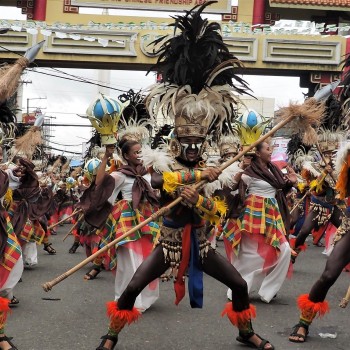
Puerto Plata Festival
Date: Every Sunday in February
Fuerte San Felipe is the central location of this lively October festival on the Dominican Republic’s north coast.
The most talented folk, blues, jazz, and merengue musicians perform during the day’s costume parades, food fairs, and dance performances. African spirituals are also part of the tradition.
Attractions / Top Sights

Bavaro Beach
When to visit: Between December and March
Bavaro Beach in Punta Cana is one of the most impressive stretches of beach, where you can wade into the water or walk for hours along the sand. Resorts line the beach and offer easy access to all the activities. It is not a place to come for a quiet getaway.
The ocean is a flurry of activity, with boats, parasailers, and tour boats coming and going. Roped-off areas offer safe places to swim. Inland from the beach is a smattering of restaurants and retail, most modern, especially Dominican Republic standards.

Puerto Plata & Playa Dorada
When to visit: May and June
Along the north coast, looking out over the Atlantic Ocean, the resort destination of Puerto Plata and the beautiful stretch of beach known as Playa Dorada is one of the Dominican Republic's biggest tourist draws. This golden-sand beach is lined with luxury resorts, although much less densely packed than what you'll find in Punta Cana.
This area is also much more subdued and has more of a tranquil feel. The beaches are not busy with boats and water sports, although it's a beautiful area for swimming or snorkeling. You can walk beyond the resorts to undeveloped beaches backed by palm trees and forest.

Beaches and Beachside Restaurants in Cabarete
When to visit: March to May
At the farthest tip of the Samaná Peninsula, where the road dead-ends at the ocean, looking out over one of the area's many beautiful beaches, is the small town of Las Galeras. Its remote location will appeal to independent travelers looking for an off-the-beaten-path experience. Palm-lined, white-sand beaches and turquoise water create an idyllic scene.
Beaches like Playa Rincon, La Playita, Playa Fronton, and other unnamed stretches of undeveloped beaches in the area are some of the best beaches in the Dominican Republic and offer the polar opposite experience of the major resort destinations on the island. Here, you can hire a boat to take you to a remote beach for a morning or afternoon or walk from town to several beautiful sandy coves in the surrounding area.

. Kiteboard on Cabarete's Kite Beach
When to visit: Between February and March/ June and August
Cabarete is known around the world as a kiteboarding destination. The action center is on Kite Beach, just around a headland from Cabarete's main beach. It's about a 20-minute walk along the beach from the center of town to Kite Beach.
This small area of Cabarete has its unique vibe. In the mornings, the beach is quiet, except for walkers and runners or people swimming and stand-up paddleboarding. When the winds pick up in the afternoon, kiteboarders descend on the beach, and the sky fills with kites.
The sand is a riot of colors, with kites waiting for the best winds to materialize. A few restaurants here offer casual food, many focusing on vegetarian food and other healthy offerings. On Friday afternoons, a free circus provides entertainment at the end of the beach. Even if you are not a kiter, it's worth coming to see the spectacle.

Whale Watching in Samaná Bay
When to visit: January 14 - March 30
From December through March, thousands of humpback whales enter Samaná Bay to mate and give birth, making this one of the best places to see these beautiful giants in the wild. The city of Samaná, on the Samaná Peninsula, is the main departure point for Whale Watching trips.
The city itself holds little else for travelers, but the whales are such a popular tourist attraction, many companies offer day trips here from various destinations around the island.

Las Terrenas
When to visit: March 19th to April 8th
Las Terrenas is a busy Dominican city on the north coast with a peaceful and laid-back beachfront area, where winding, single-lane dirt roads meander past small French cafés and lookout over palms, beaches, and the aquamarine ocean. Just a short stroll inland takes you to the motorbike-filled streets, where Dominicans go about work and everyday life.
It is one of the best places to visit if you want a taste of Dominican culture and all the conveniences of a city, combined with a great beach destination. Like Las Galeras, many French people have made Las Terrenas their home and have set up restaurants and inns.

27 Waterfalls of Damajagua
If you are looking for adventure, one of the most exciting things to do in the Dominican Republic is climbing up a narrow gorge of waterfalls and then jump off the top of each one into the pools below. This attraction is not for the faint of heart; it's a serious undertaking but incredibly fun.
You'll be outfitted with a lifejacket and a helmet and led by a qualified guide who will take you up a series of ladders. As you ascend, you'll be able to watch other visitors fly past you on their descent. It's nonstop action and mayhem. Some drops are quite high, but you can always change your mind in any given section and take the ladder back down.

Bahia de Las Aguilas
When to visit: Early in the morning, at sunrise,
Well off the major tourist route, the remote Bahia de Las Aguillas in Jaragua National Park is a glorious eight-kilometer stretch of beach, which you may have all to yourself on any given day. The shallow, clear, calm water and white-sand bottom, combined with a distinct lack of tourism and development, make this one of the most pristine beaches in the Dominican Republic.
Located on the southwestern coast of the country, close to the border with Haiti, this area is isolated. From Santo Domingo, the drive time is at least six hours. The nearest town to the beach is Pedernales, almost an hour away by car. The tourism infrastructure in this part of the Dominican is some of the least developed in the country.
You won't find luxury resorts, but you will find tranquility, solitude, and unique experiences if you come out this way. The climate here is semi-arid, and the landscape, which consists mainly of cactus and scrub, is much different than other areas of the country.

Isla Saona and Parque Nacional de Este
While Parque Nacional del Este, a UNESCO World Heritage Site, is a serene place of natural beauty and habitat for countless plants, animals, and birds, most people know the park for the beaches of Isla Saona. This island is a tourist magnet, with all kinds of day-trippers from the nearby resort destinations of Punta Cana and La Romana.
The soft-sand beach and turquoise water are what most people would imagine if they were to picture a tropical island paradise. But, although there are no resorts on the island, it is a lively destination during the day as catamarans and speedboats drop tourists on the beaches to relax in lounge chairs and soak up the sun.

Jarabacoa
When to visit: March, June, July and August
While many Dominican vacationers consider Jarabacoa a summer retreat destination, foreign travelers tend to see it as an outdoor adventure playground in the mountains of the Dominican Republic's interior. In the vicinity are opportunities for rafting, hiking, biking, and other types of exploration.
At an elevation of over 500 meters, the climate here is much milder than the coast, and nights are often cool. If you spend more than just a week or two in the country, it's worth venturing up to Jarabacoa. This town also makes a convenient stop for a couple of nights if you are traveling between Santo Domingo and either Puerto Plata or Cabarete.

